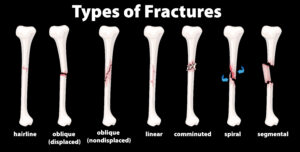
Immediate Steps After a Fracture
Stay Calm and Assess the Situation
The first thing to do when you realize you’ve got a fracture is to stay calm. Panic can worsen the situation, especially if you’re alone. Take a deep breath and assess your surroundings to ensure you’re safe. Check the injured area for signs of a fracture, such as swelling, bruising, or an unnatural bend in the limb.
Immobilize the Injured Area
It’s crucial to keep the fractured bone as still as possible. Movement can cause further damage to the bone and surrounding tissues. If you have access to a splint or sling, use it to immobilize the area. If not, use any available items like a rolled-up newspaper or a piece of cloth to create a makeshift splint.
Apply Ice
Applying ice to the injured area can help reduce swelling and numb the pain. Wrap the ice in a cloth or towel to avoid direct contact with the skin and apply it for 20 minutes at a time. Repeat as necessary while you wait for medical help.
Seek Medical Attention
Regardless of the severity of the fracture, it’s essential to seek medical attention. Call for emergency services or have someone drive you to the nearest hospital or urgent care center. If the fracture appears severe, with the bone protruding through the skin or a significant amount of blood loss, call 911 immediately.
Medical Treatment for Fractures
Diagnosis
Once at the medical facility, the doctor will conduct a thorough examination of the injured area. They may order imaging tests like X-rays or MRIs to determine the extent of the fracture. These tests will help the doctor decide the best course of treatment.
Setting the Bone
For most fractures, the doctor will need to set the bone back into its proper position. This process, known as reduction, can be done manually or surgically, depending on the fracture’s severity. In some cases, the patient may be sedated to minimize pain during the procedure.
Immobilization
After the bone is set, immobilization is crucial to ensure proper healing. The doctor may use a cast, splint, or brace to keep the bone in place. The type of immobilization will depend on the fracture’s location and severity. It’s important to follow the doctor’s instructions and avoid putting weight or stress on the injured area.
Managing Pain and Promoting Healing
Pain Relief
Pain management is a vital part of fracture treatment. Your doctor may prescribe pain medications or recommend over-the-counter options like ibuprofen or acetaminophen. Always follow the prescribed dosage and never exceed the recommended amount.
Elevate and Rest
Keeping the injured area elevated can help reduce swelling. Rest is also crucial for the healing process. Avoid activities that could stress the fracture and give your body the time it needs to heal.
Physical Therapy
Once the initial healing phase is over, physical therapy may be necessary to regain strength and mobility in the injured area. A physical therapist will guide you through exercises designed to improve flexibility and restore normal function.
Preventing Complications
Watch for Signs of Infection
If your fracture required surgery or if you have an open wound, it’s essential to watch for signs of infection. These can include redness, warmth, pus, or an unusual odor around the wound. If you notice any of these signs, contact your doctor immediately.
Bone Health
Maintaining good bone health can prevent future fractures. Ensure you’re getting enough calcium and vitamin D in your diet, and consider supplements if necessary. Weight-bearing exercises like walking or lifting weights can also strengthen your bones.
When to Follow Up with Your Doctor
Regular follow-up appointments are crucial to monitor the healing process. Your doctor will schedule X-rays to check the bone’s alignment and healing progress. They will also adjust your treatment plan as needed.
Living with a Fracture
Daily Activities
Living with a fracture can be challenging, especially when it comes to daily activities. It’s important to find ways to adapt and seek help when needed. Use assistive devices like crutches or a walker to get around and avoid putting weight on the injured area.
Emotional Support
Dealing with a fracture can be emotionally draining. It’s normal to feel frustrated or anxious about your recovery. Reach out to friends, family, or a support group to share your feelings and get encouragement.
Conclusion
Getting a fracture can be a daunting experience, but knowing what to do can make a significant difference in your recovery. Remember to stay calm, seek medical attention, and follow your doctor’s advice. With proper care and patience, you’ll be back on your feet in no time. If you got a fracture, follow these steps to ensure a smooth and speedy recovery.
